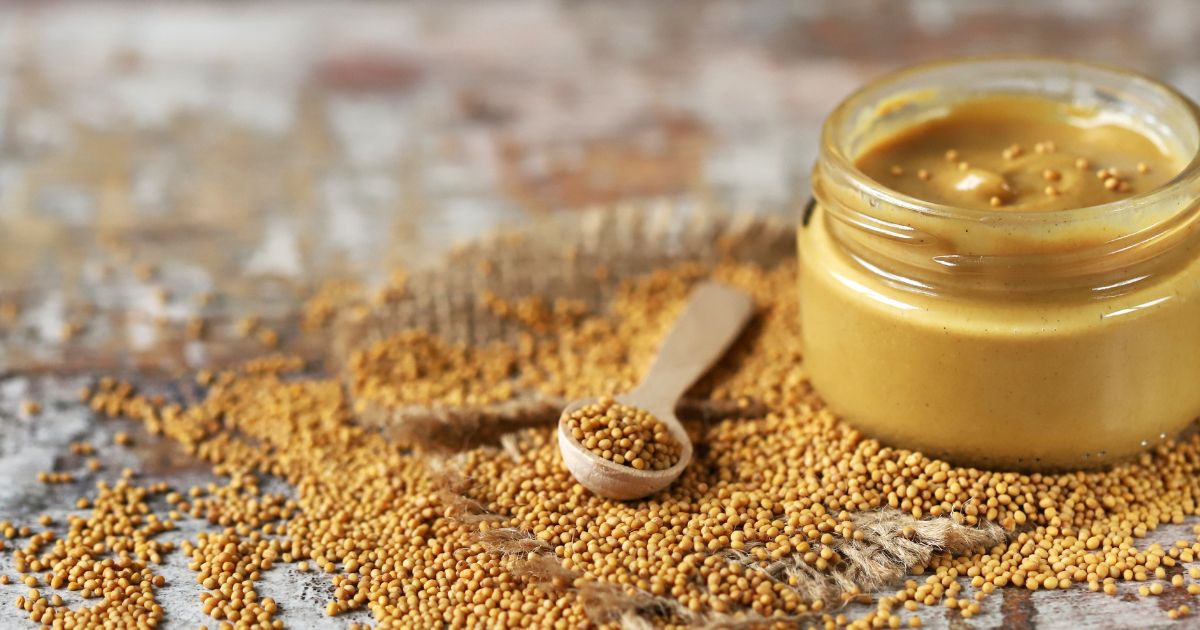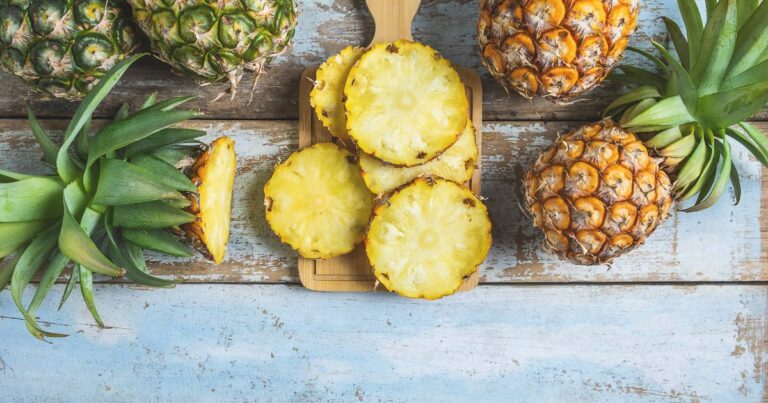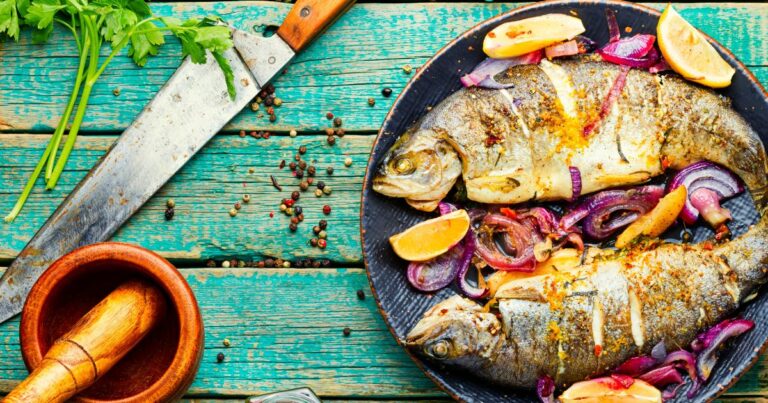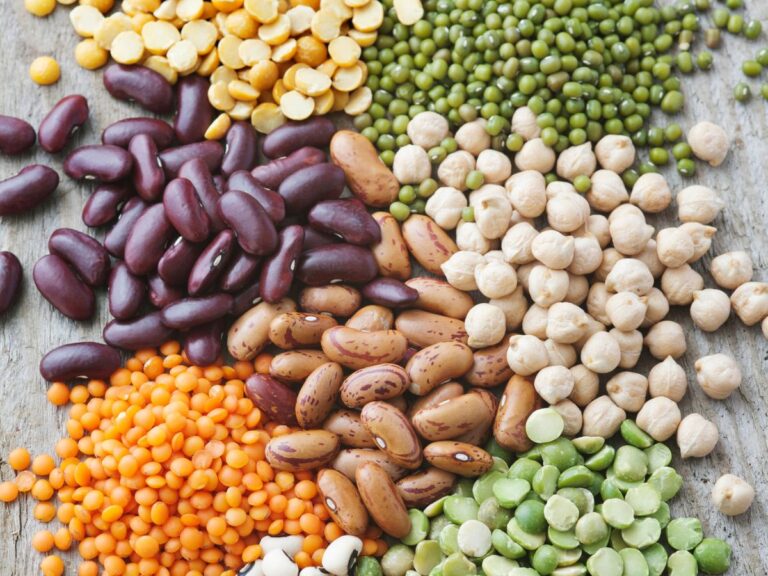Exploring Stone Ground Mustard: Its History, Taste, Benefits and Kitchen Uses
You have eaten so much Delicious Mustard, but have you ever stopped to think, what exactly am I eating here? What is stone ground mustard? We need to find some answers!! Its rich history, unique production process, and delightful, slightly spicy taste profile make it one of the most used and savored condiments.

I’m excited to guide you through the captivating story and flavors of stone ground mustard. As someone who has spent years in the kitchen, experimenting with and savoring various ingredients, I hold a special place in my heart for this humble yet mighty condiment.
In this comprehensive exploration, we’re going to uncover the history behind stone ground mustard, understand its organic and artisanal production process, relish its bold and nuanced flavors, and discover its versatility in various cuisines while deeply examining your mustard cravings.
I’ll also share some personal anecdotes and chef’s secrets about harnessing its health benefits and offer practical advice on buying and storing it.
Table of Contents
What is Stone Ground Mustard?

As the name suggests, stone-ground mustard is made from whole mustard seeds between two stones. This age-old method is like a trip back in time, bringing a rustic and hearty texture to the burgers and french fries on the table. You get whole or partially ground seeds suspended in a liquid, anything from water to vinegar, even wine, if it’s feeling fancy!
The Enchanting History of Stone Ground Mustard

The story of stone ground mustard is as rich and intricate as its flavor. This condiment has its roots in ancient civilizations, where mustard seeds were first cultivated for their intense flavor and medicinal properties.
The art of grinding these seeds with stone, mortar, and pestle, a technique that preserves their natural oils and flavors, has been passed down through generations. This age-old process gives stone ground mustard its distinctive coarse texture and robust taste, setting it apart from other mustard varieties.
The Art of Producing Stone Ground Mustard
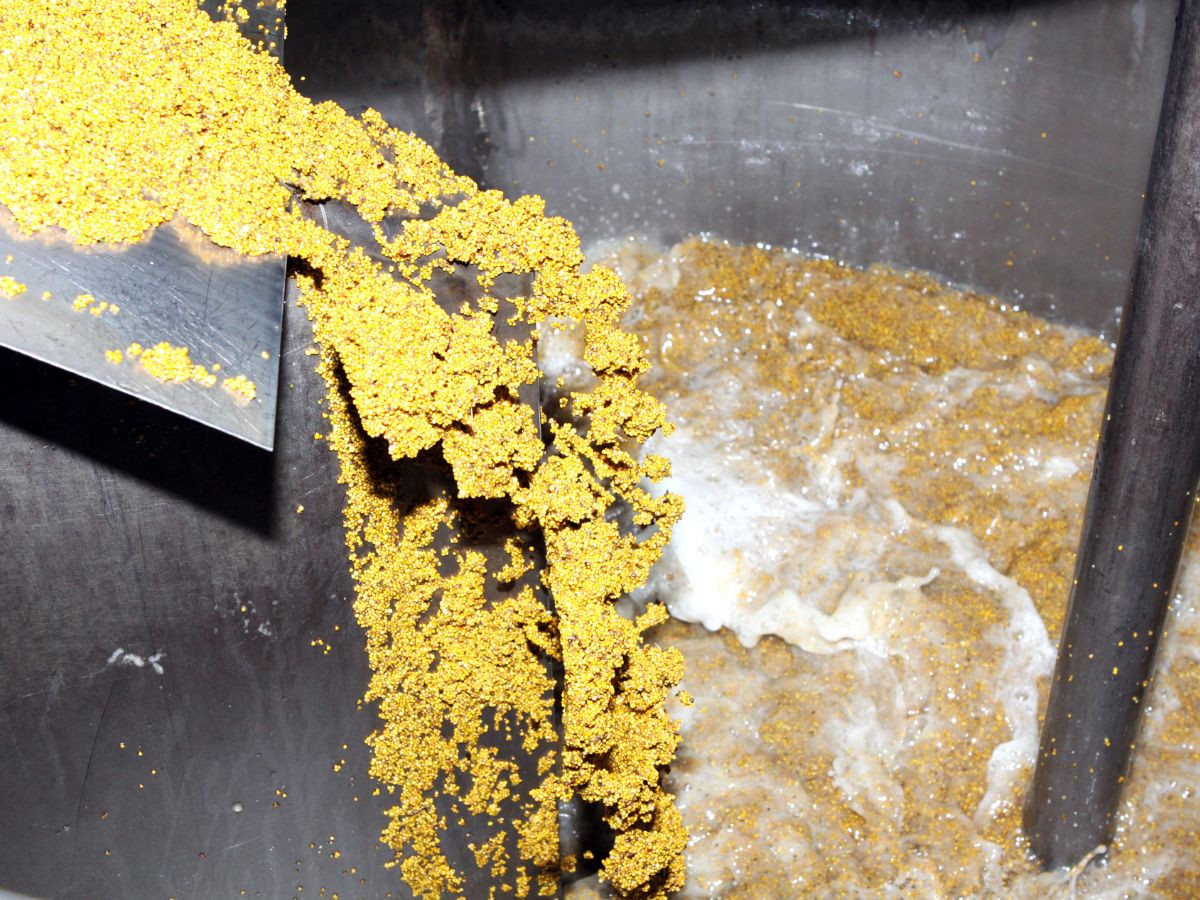
As a chef, I appreciate the craftsmanship of making homemade stone ground mustard. The process begins with selecting high-quality mustard seeds carefully ground between two millstones.
This traditional method ensures that the seeds are crushed rather than cut, retaining their essential oils and resulting in a richer flavor. The ground seeds are then mixed with a blend of ingredients like vinegar, water, and spices, creating a condiment that is both rustic and refined.
Stone-ground mustard is made using a process that highlights both tradition and simplicity. Here’s a basic overview of homemade mustard and how it’s typically produced:
Selecting Mustard Seeds:
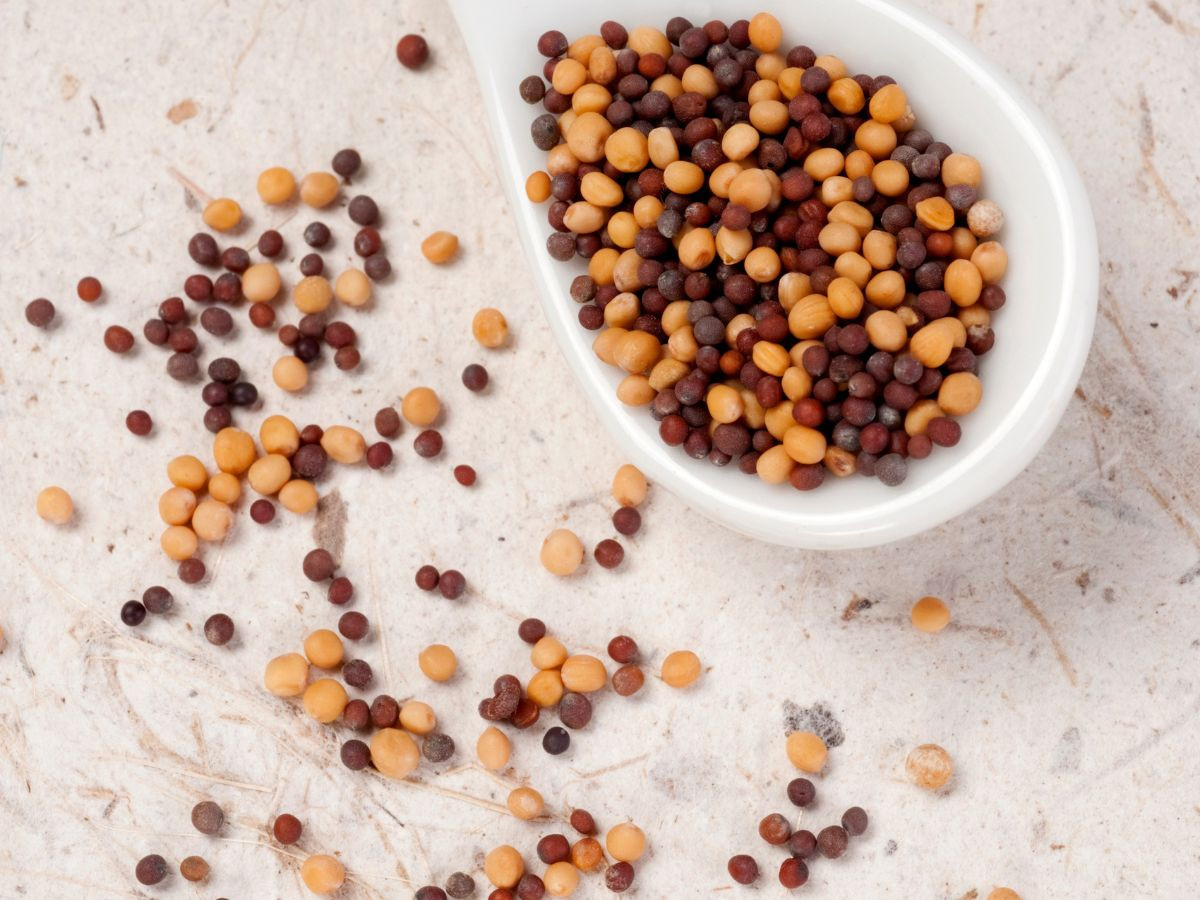
The process begins with the selection of mustard seeds. Different varieties (yellow, brown, or black) can be used, each imparting a different flavor and level of spiciness.
Grinding the Seeds:

True to its name, stone-ground mustard is made by grinding mustard seeds between two millstones. This traditional method crushes the seeds to a coarse, gritty texture. The grind can vary from slightly coarse, where the seeds are partially broken, to a finer ground texture while maintaining some of the seed’s integrity. This process is slower and less harsh than modern mechanical grinding, which helps preserve the oils and flavor of the seeds.
Mixing with Liquids:

The ground seeds are mixed with a liquid, typically water, vinegar, or even wine, beer, or cider. The choice of liquid affects the flavor of the mustard. Water yields a more pungent mustard, while vinegar and other acidic liquids mellow the sharpness and add their flavor nuances.
Adding Flavorings and Spices:
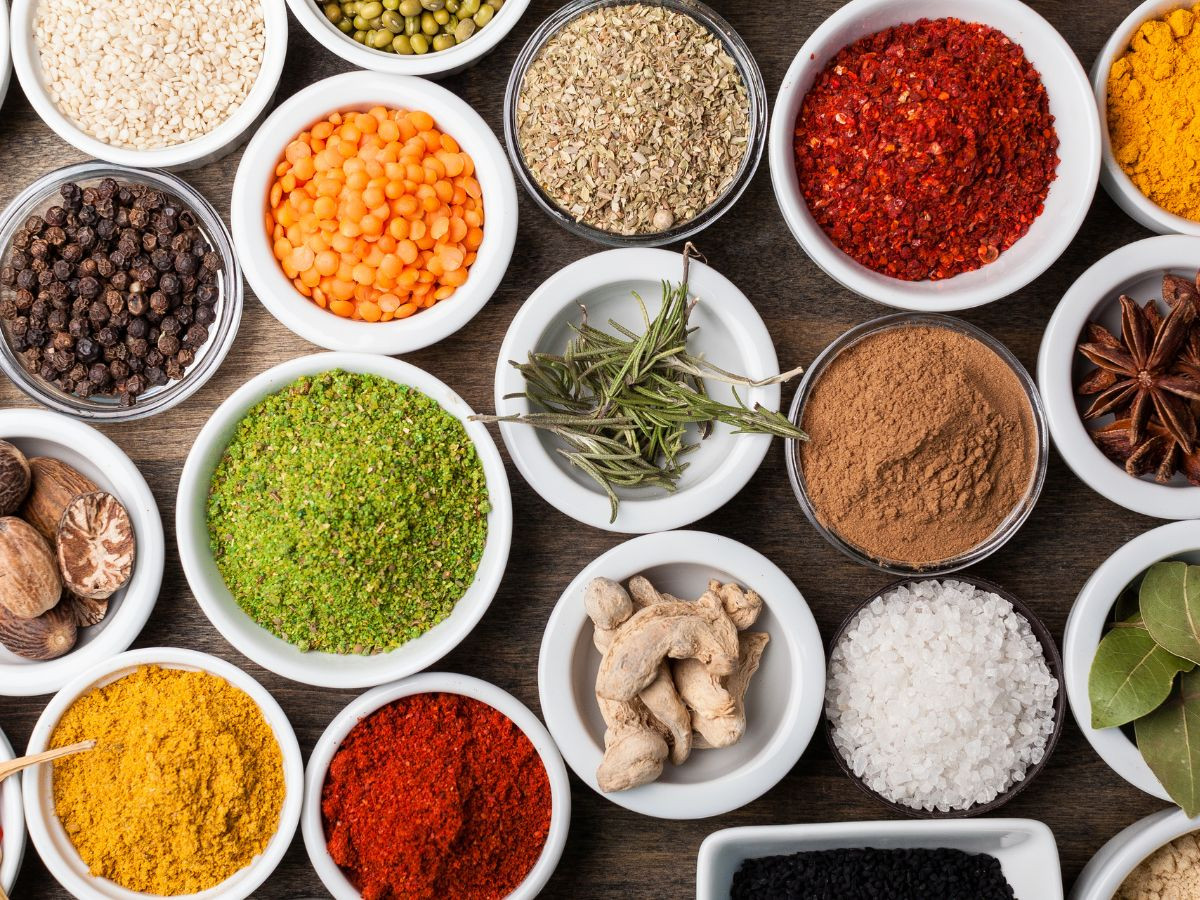
Various flavorings and spices may be added depending on the recipe. This can include salt, honey, herbs, spices, or even horseradish to create different flavor profiles.
Aging the Mustard:
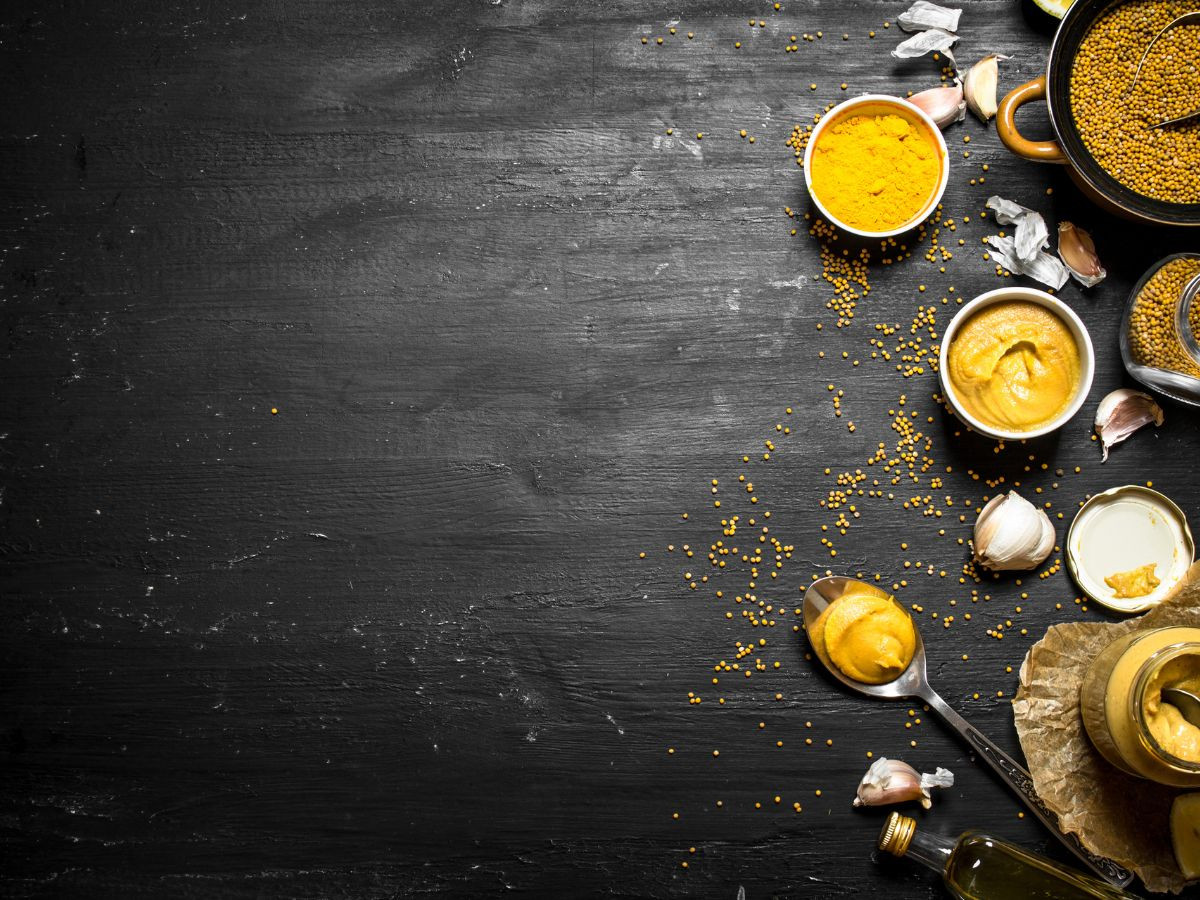
The mixture is then allowed to age for a period ranging from a few hours to several days. This aging process allows the flavors to meld and develop. The length of aging can affect the intensity and depth of flavor.
Packaging:

Once the mustard reaches the desired flavor and consistency, it’s packaged. This can be in jars, tubes, or other containers.
Quality Control:
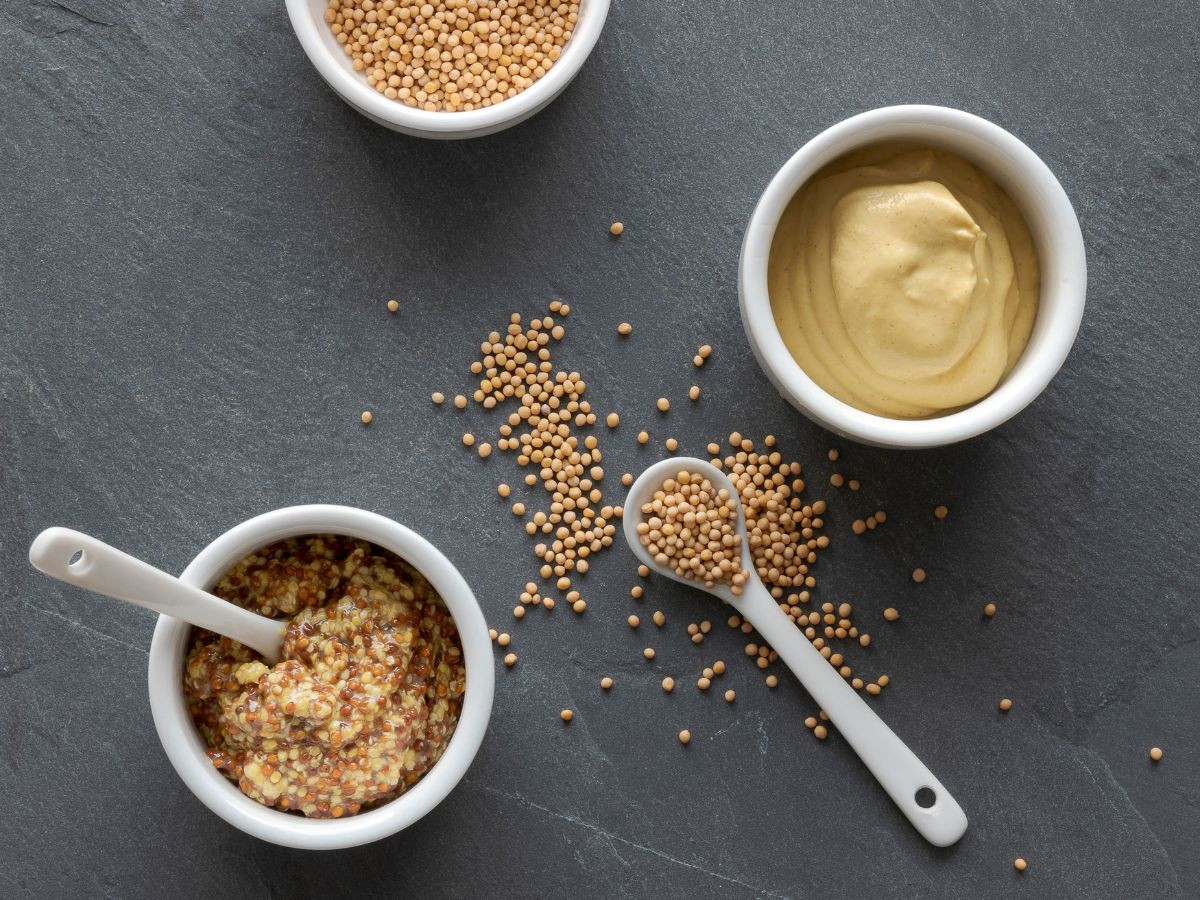
Quality control ensures the mustard meets the desired flavor, texture, and shelf life standard throughout the process.
The Unique Flavor Profile
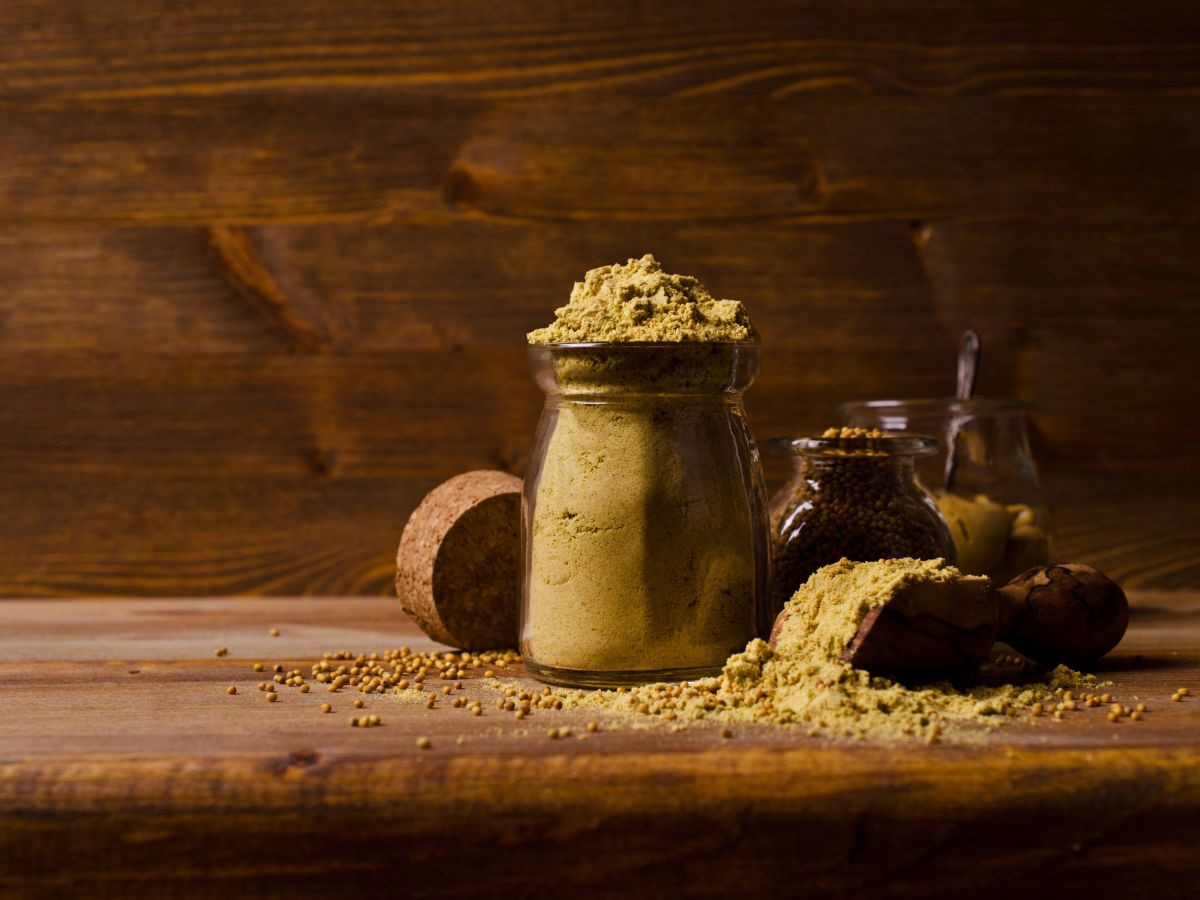
What sets Stone ground mustard apart is its unique flavor profile. It strikes a beautiful balance between tangy, spicy, and slightly bitter, making it a fun and versatile ingredient in the kitchen.
Its coarse texture adds flavor and a delightful crunch to dishes, enhancing their taste and presentation.
Stone-ground mustard offers a distinctive and complex flavor profile characterized by its unique blend of textures and tastes:
Texture

The most notable feature of stone-ground mustard is its texture. It’s coarser and more rustic than smoother mustards, with partially crushed seeds that provide a grainy and sometimes slightly crunchy mouthfeel.
Flavor Depth
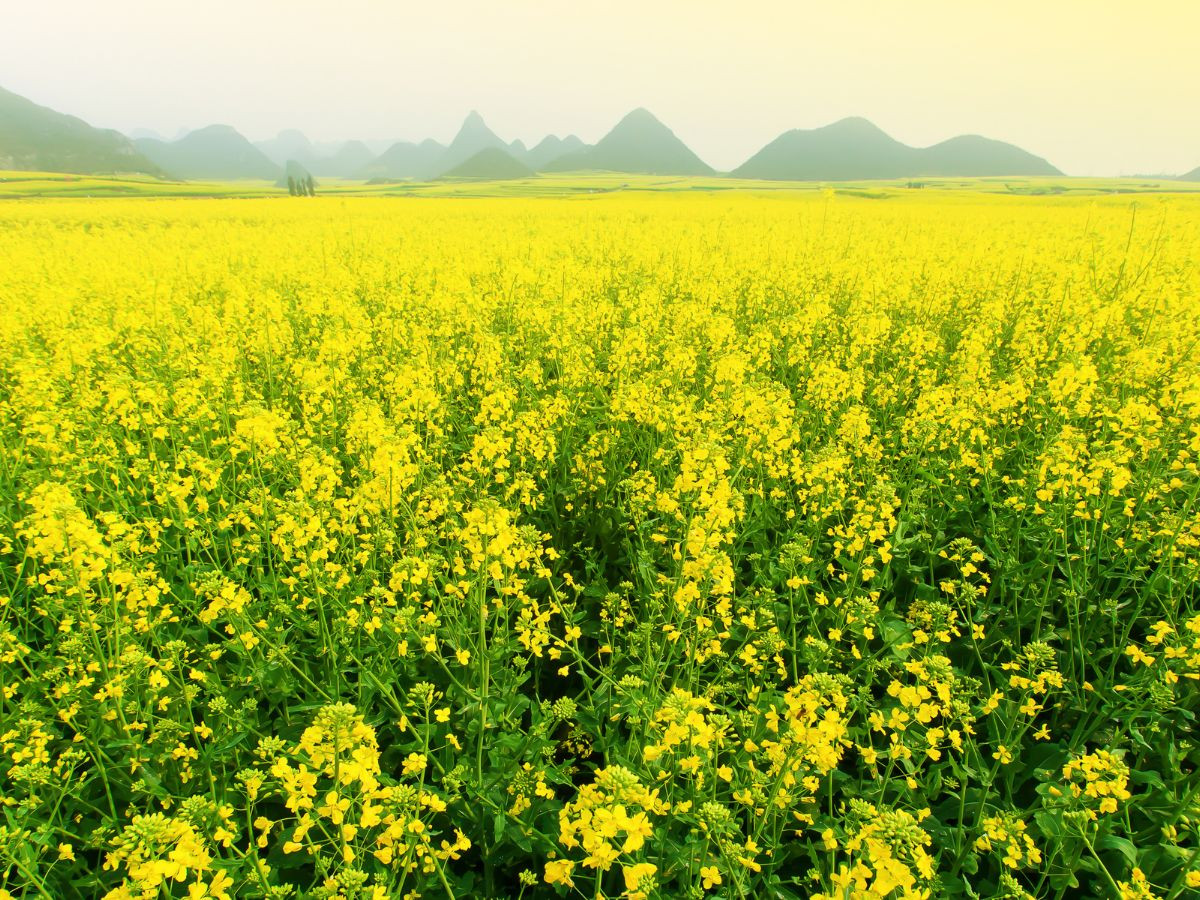
Stone-ground mustard typically has a deep, robust flavor. It’s less about sharpness and more about a full-bodied, earthy taste from the less processed seeds.
Spiciness

While not as spicy as some hot mustard, stone-ground mustard often has mild to moderate heat. The level of spiciness can vary depending on the type of mustard seeds used (brown or black seeds lead to a spicier taste, while yellow seeds are milder).
Tanginess

Usually, an underlying tangy or vinegary component is a hallmark of many mustard varieties. This tanginess complements the earthiness of the ground seeds.
Slight Bitterness

Some stone-ground mustards have a hint of bitterness, a natural characteristic of mustard seeds. This bitterness is usually well-balanced by the other flavors in the mustard.
Complexity

Overall, stone-ground mustard is less about a dominant flavor and more about a symphony of tastes. The coarser grind allows the natural complexities of the mustard seeds to shine through, creating a more nuanced flavor experience than finer, smoother mustards.
Culinary Uses of Stone Ground Mustard

In my culinary adventures, stone ground mustard has been a go-to ingredient for adding depth and complexity to dishes. It’s fantastic in marinades, dressings, and sauces, lending a robust flavor that compliments meats
With its unique texture and robust flavor, stone-ground mustard is incredibly versatile in the kitchen. Here are some delicious ways to use it:
Marinades: Mix stone-ground mustard with olive oil, herbs, and spices for a flavorful marinade for meats like chicken, pork, or beef. It helps tenderize and infuse the meat with a rich flavor.
Salad Dressings: Whisk it into vinaigrettes for a tangy twist. It pairs wonderfully with balsamic vinegar or red wine vinegar, olive oil, and a touch of honey for sweetness.
Sandwich Spreads: Elevate your sandwiches by spreading stone-ground mustard on the bread. It adds a delightful kick to aged cheeses, ham, turkey, or roast beef sandwiches.
Sauces and Gravies: Use it as a base for sauces and gravies for a piquant flavor. It’s perfect in creamy sauces served with chicken or steak.
Glazes: Combine it with honey, maple syrup, or brown sugar to create a sweet and spicy glaze for roasted or grilled meats, especially pork and salmon.
Dips: Mix it with sour cream, mayonnaise, cheeses, or Greek yogurt to create a dip for vegetables, pretzels, or chips.
Mustard Butter: Blend it with softened butter to create your own mustard butter, perfect for spreading on bread, melting over steaks, or tossing with vegetables.
Potato Dishes: Add a spoonful of mashed potatoes or potato salad for an extra zing.
Egg Dishes: Spice up deviled eggs or egg salad with a touch of stone-ground mustard.
Roasted Vegetables: Toss vegetables like Brussels sprouts, carrots, or potatoes with a bit of mustard before roasting for added flavor.
Is Stone-Ground Mustard Spicy Mustard?

Stone-ground mustard’s spiciness largely depends on the specific recipe and the type of mustard seeds used. Here’s a brief breakdown:
Variety of Mustard Seeds: Mustard seeds come in different varieties, mainly yellow, brown, and black. Yellow mustard seeds are milder, while brown and black seeds are hotter and more intense.
Preparation Method: Stone-ground mustard involves grinding brown mustard seeds coarsely. This process alone doesn’t determine the spiciness; it’s more about the texture.
Additional Ingredients: The spiciness can also be influenced by other ingredients like white wine vinegar, horseradish, wasabi, or additional spices that might be included in the recipe.
Stone-ground mustard can range from mild to spicy. The spiciness is not guaranteed just because it’s stone-ground. It’s essential to check the ingredients or the label to understand its heat level. Some stone-ground mustards are pretty mild, while others might pack a spicy punch.
What is the difference between Stone-ground mustard and Regular mustard?

When you’re in the condiment aisle, staring at the array of mustards, two types might catch your eye: stone-ground mustard and what we often call ‘regular‘ mustard. Here’s a little more about what sets these two apart.
Stone-Ground Mustard
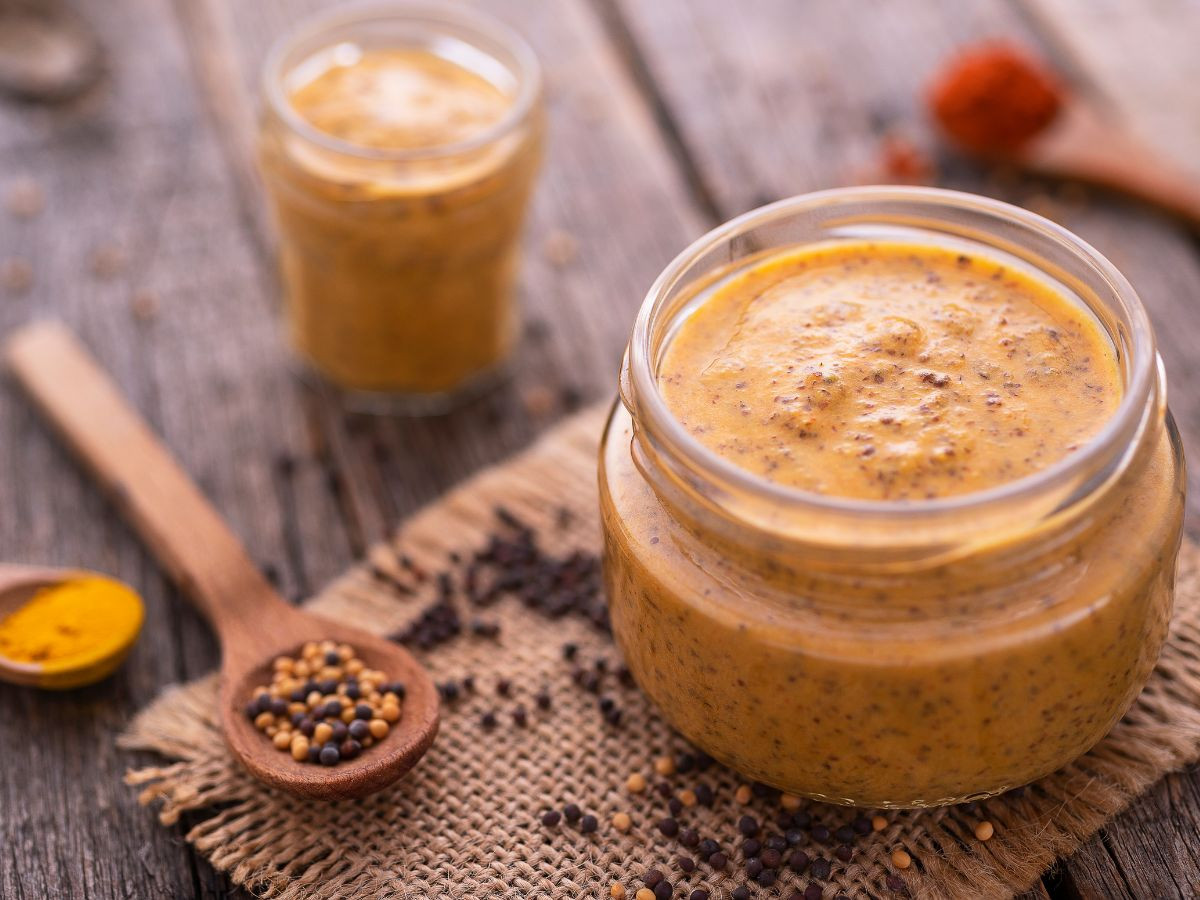
This is the rustic, charming type in the mustard family. Imagine grinding brown mustard seeds and yellow mustard seeds crushed between two stones, retaining some of their original texture.
When you taste stone-ground mustard seed, it’s like a little party of flavors in your mouth. You’ll notice it’s less about the sharp, tangy zing and more about a deep, earthy flavor.
It’s chunkier; you can often see the whole or partially ground seeds. I love it in hearty sandwiches or as a robust complement to sausages and cheeses. It feels more artisanal, more gourmet.
Regular Mustard
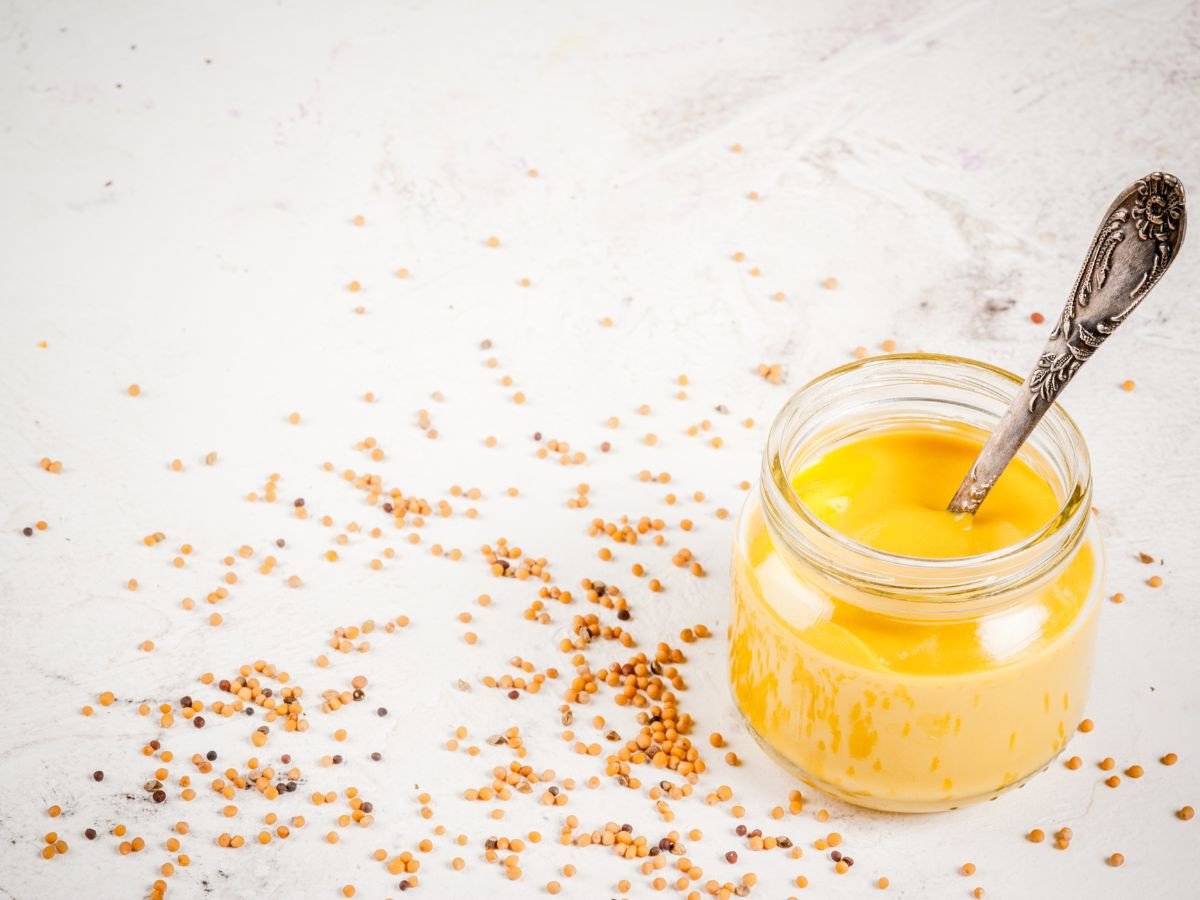
Now, this is what most of us grew up with. Think of the classic yellow mustard you’d squirt on hot dogs. It’s smooth and has a consistent texture, thanks to the finely ground mustard seeds.
The flavor is usually milder, a bit tangy, and often brighter in color (hello, turmeric!). It’s the all-American staple for picnics and ball games.
So, when deciding between the two products, think about the texture and depth of flavor you’re after. Stone-ground mustard is your go-to for a more robust, earthy experience, while regular mustard is perfect for something classic and tangy.
Is Stone-ground mustard healthy?

Homemade stone-ground mustard is generally considered a healthy condiment option, especially compared to many other sauces, and spreads are high in calories, fats, or sugars.
Low in Calories: Mustard, including stone-ground varieties, is typically low in calories, making it a good choice for those watching their calorie intake.
Minimal Fats and Sugars: Stone-ground mustard usually contains negligible amounts of fat and sugar, which is beneficial for a balanced diet.
Nutrients: Mustard seeds, the primary ingredient, contain small amounts of vitamins and minerals such as calcium, potassium, and vitamin C. They also have some dietary fiber.
Antioxidants: Mustard seeds are known to contain antioxidants, which play a role in reducing oxidative stress in the body.
Sodium Content: One thing to be mindful of is the sodium content. Like many condiments, stone-ground mustard can be high in salt, so it’s wise to consume it in moderation, especially if you monitor your sodium intake.
Gluten-Free: For those with gluten sensitivities, stone-ground mustard is typically gluten-free, but it’s always best to check the label to be sure, as some brands may add gluten-containing ingredients.
No Harmful Additives: Most stone-ground mustards are made with natural organic ingredients and don’t contain preservatives, high fructose corn syrup, or artificial colors, making them a healthier choice than highly processed condiments.
FAQ and Additional Information
Is Mustard Made From Grinding Brown Mustard Seeds?
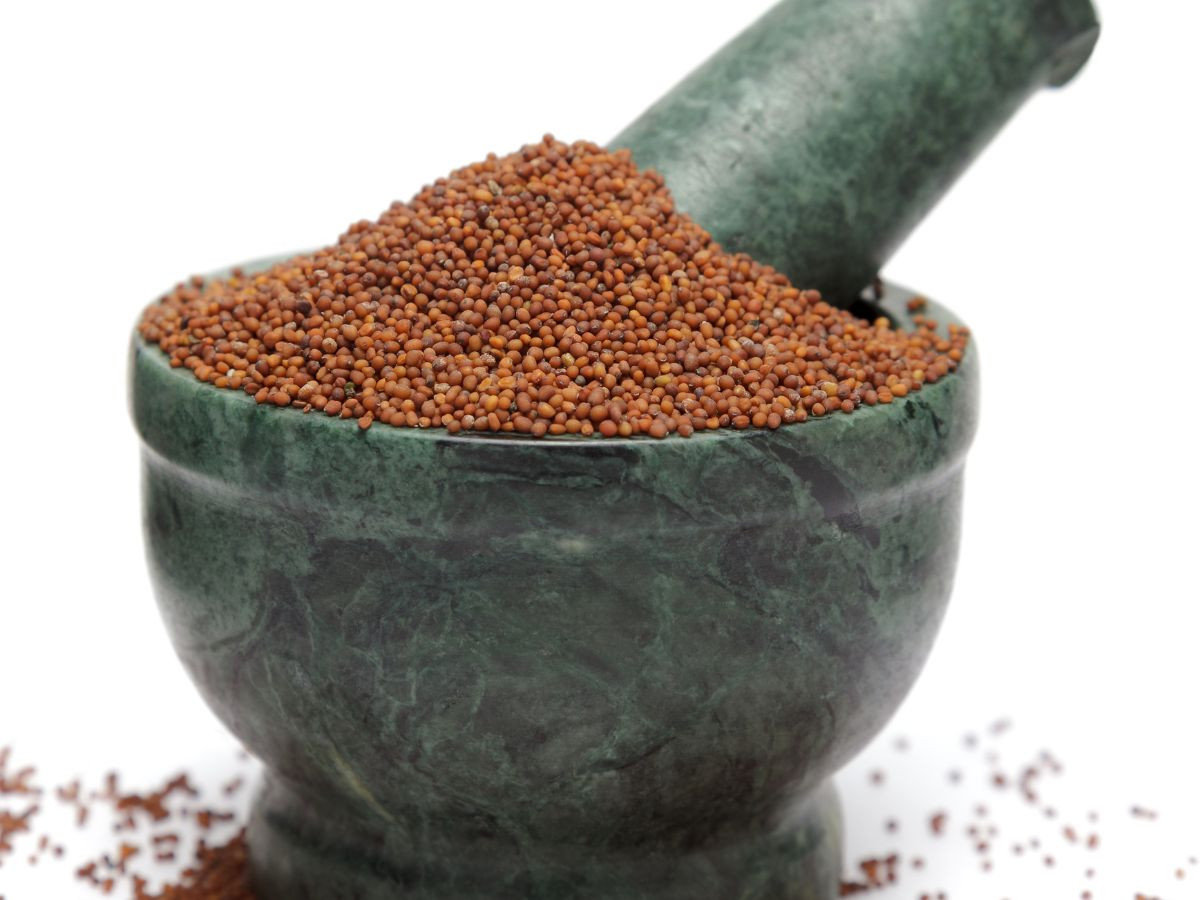
Yes, mustard can be made from grinding brown mustard seeds. Here’s a bit more detail:
Brown Mustard Seeds: These seeds are known for their pungent and spicy flavor. When ground, they form the basis of many types of mustard, especially those labeled spicy or robust.
Making Mustard: The process involves grinding the seeds and mixing them with liquids like water, vinegar, wine, and other flavorings and spices. The grinding can vary from coarse, which retains some seed texture, to very fine, creating a smoother mustard.
Variety in Mustard: Mustards can be made from different types of seeds: yellow (milder), brown (more pungent), or black (the strongest). The type of seed used dramatically influences the final flavor of the mustard.
So, brown mustard seeds are common in many mustard varieties, particularly those ?with a more robust, spicier profile.
What is a substitute for stone-ground mustard?

If you’re looking for a substitute for stone-ground mustard, you have a few options depending on what you have in your pantry and the flavor profile you aim for. Stone-ground mustard is known for its coarse texture and robust flavor, so consider these alternatives:
Whole Grain Mustard: A great substitute, as it also has a coarse texture and a similar mustard seed flavor profile. It’s perfect in recipes where the mustard’s texture is a key element.
Dijon Mustard: While smoother, Dijon mustard can be a good stand-in, especially in dressings and Dijon mustard sauces. It offers a sharp, tangy flavor that mimics the intensity of stone-ground mustard.
Spicy Brown Mustard: Another good option, particularly if you’re after a note of heat. It’s slightly less coarse but still brings a strong mustard flavor.
Yellow Mustard: If you’re in a pinch, regular yellow mustard can work, especially in recipes where mustard isn’t the star player. It’s milder and smoother, but it’s still mustard!
Horseradish or Wasabi (in small amounts): If you’re looking to replicate the sharpness in a recipe and texture isn’t as important, a bit of horseradish or wasabi can do the trick. Please be careful with the quantities since they can be pretty potent.
Remember, the best substitute often depends on the recipe and the mustard’s role.

